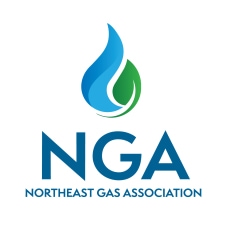Natural Gas Vehicles
Natural gas vehicles (NGVs) are on the move in the Northeast. Fueling with natural gas provides an important alternate fuel source for transportation, and helps reduce air pollution emissions
from cars, trucks and buses. It employs a fuel that is domestically-produced and economically competitive. Compressed natural gas (CNG) and liquefied natural gas (LNG) vehicles represent
options for medium-
and heavy-duty vehicles in particular.
About Natural Gas Vehicles
CNG provides a large majority of the alternate fuel transit bus fleet in the U.S. U.S. EIA in spring 2017 noted that "Transit agencies primarily have heavy-duty buses for mass transit in metropolitan areas. Of all alternative-fuel buses in use, natural gas is by far the most prevalent in fleets. In 2015, transit agencies reported an inventory of slightly more than 14,000 AFVs, and about 10,000 of those AFVs were heavy-duty buses that consumed 132 million gasoline equivalent gallons of natural gas. Natural gas-powered vehicles require less maintenance than standard-fuel vehicles because of cleaner burning engines, which allows for lower emissions and cleaner environments."
The Northeast U.S. is actively promoting alternatively-fueled vehicles to help address the region's air pollution challenges as well as providing an alternative to gasoline-fueled vehicles.
Natural gas vehicles provide many benefits, from improved environmental performance to a domestic supply base to competitive economics. It is a proven and available technology ready today to help North America and the Northeast U.S. meet its alternative fuel transportation goals. Some highlights of the various benefits are included here:
Environmental
The Northeast U.S. is actively promoting alternatively-fueled vehicles to help address the region's air pollution challenges.
Natural gas vehicles are clean, and are available now!
Typical dedicated NGVs can reduce exhaust emissions of:
- Carbon monoxide (CO) by 70%
- Non-methane organic gas (NMOG) by 87%
- Nitrogen oxides (NOx) by 87 percent
- Carbon dioxide (CO2) by 20 to 30% below those of diesel and gasoline vehicles.
The U.S. Department of Energy's alternative fuel vehicle website notes: "Commercially available medium- and heavy-duty natural gas engines have demonstrated over 90% reductions of carbon
monoxide (CO) and particulate matter, and more than 50% reduction in nitrogen oxides (NOx) relative to commercial diesel engines."
The evidence is clear: natural gas vehicles are part of the environmental solution.
Supply
North America's natural gas supply base is vast. NGVs run on abundant domestic supplies.
The U.S. is the largest producer of natural gas in the world. Its extensive supply resource ensures security of supply and contributes to a generally stable commodity price.
In February 2022, the U.S. EIA reported that the Appalachian region "has provided the largest share of U.S. domestic natural gas output, accounting for one-third of Lower-48 production since
2016."
This positive supply news was reiterated in fall 2021 when the Potential Gas Committee released its 2020 biennial report: Potential Supply of Natural Gas in the United States. The updated
assessment finds that the United States possesses a total technically recoverable natural gas resource base of 3,368 trillion cubic feet (Tcf). The Atlantic area ranks as the country's
"richest resource area" with 39% of total U.S. gas resources. Most of this Atlantic regional growth results from the production and resource base associated with the Marcellus and Utica shale
plays in the Appalachian basin.
Economic
For natural gas, the new domestic supply additions, principally from shale gas, has created a positive price position.
It is projected by the U.S. government that the natural gas price bandwidth will stay relatively moderate over the coming years, given the size of the domestic supply resource base.
The U.S. Department of Energy Alternative Fuels Data Center maintains a database on comparative costs of transportation fuels. You can find the data comparison here:
http://www.afdc.energy.gov/afdc/price_report.html
For these reasons and more, natural gas vehicles offer great opportunities to the Northeast and the U.S. market.
For these reasons and more, natural gas vehicles offer great opportunities to the Northeast - and the U.S. - market.
The mission of NGA's NGV Committee is as follows:
to promote and support the advancement of natural gas vehicles (NGVs) in the Northeast region and to serve as a regional voice and information source on NGVs/CNG/LNG.
For further information on CNG vehicles, visit the following web sites:
Recent NGA Presentations
- Renewable Natural Gas Coalition, Fall 2016
- Barry Carr, Landi Renzo USA, Corporate Overview, 4-28-16
- Dave Myers, Hexagon Composites, CNG Mobile Pipeline, 4-28-16
- Mark Babcock, Algas-SDI, CNG Systems, 4-28-16
- DERIVE Systems, 9-24-15
- Meredith Webber, Gas Storage & Transportation, Luxfer-GTM Technologies, 9-24-15



